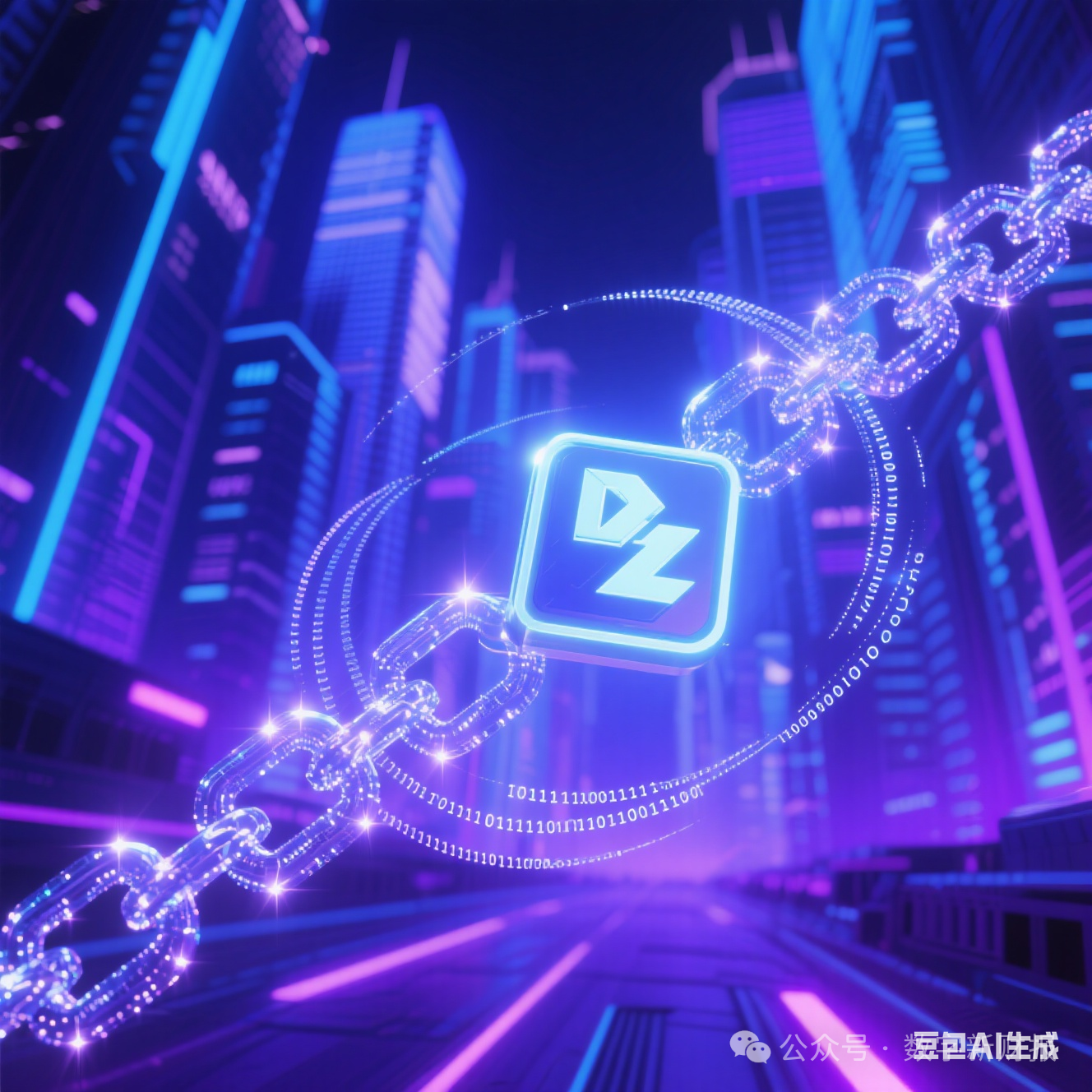作者:张烽
在金融与科技、产业加速融合的浪潮中,RWA浪潮正以前所未有的力量重塑着价值流动的底层逻辑。
当我们穿透「科技+金融+产业」外表而深入其精微,一个简洁却极具穿透力的公式逐渐清晰:RWA = App + Data。这是对数字资产本质的终极解构——它将复杂庞大的现实世界资产,最终凝炼为可执行的应用(App)与可流动的数据(Data)这一对核心要素,这可能让我们更加彻底理解,数字化所带来的价值表达与交换范式的这一场深刻革命。

一、RWA本质的宏观透视:科技+金融+产业
RWA(Real World Asset)的核心在于将传统世界中具有真实价值、权属清晰的有形或无形资产(如房地产、债券、大宗商品、艺术品、知识产权甚至碳信用等),通过技术手段进行数字化表征、确权、分割并引入链上世界进行流通。其生命力根植于三元属性的深度耦合。
科技属性。区块链(提供不可篡改的账本、智能合约自动化)、物联网(IoT,实现物理状态数据采集)、人工智能(AI,用于风险评估、定价、自动化管理)、隐私计算(如零知识证明,保护敏感数据)等构成技术基石。没有这些技术的成熟,RWA只是空谈。
金融属性。RWA的核心目标是释放传统资产的流动性,创造新的金融工具和市场。它涉及复杂的金融工程(如资产结构化、分级)、风险管理、合规(KYC/AML)、交易结算机制,以及连接链上DeFi(去中心化金融)协议和链下传统金融体系的桥梁作用。
产业属性。RWA的价值锚定于真实世界的经济活动。它要求深刻理解特定产业(如房地产的租赁管理、供应链金融的货物流转、碳市场的监测报告核证)的运作逻辑、数据源和痛点,实现资产在物理世界与数字世界的价值映射。
这三者并非孤立存在,而是相互渗透、协同演进。科技是引擎,驱动流程自动化和信任建立;金融是脉络,设计价值流动的规则与通道;产业是土壤,提供价值产生的源泉和应用场景。
科技赋能金融工具作用于产业场景,产业场景产生的价值数据反哺金融模型并验证技术效能,金融需求又不断刺激科技创新以解决产业痛点。RWA的繁荣,必然是三元属性在具体场景中深度融合的结果。
二、 三元属性的微观表达:App+法律+Data
当我们从宏观的三元融合下沉到微观的实现层面,科技、金融、产业这三股力量最终凝结为两种最基础、最普适的要素形态:应用(App)与数据(Data)。
(一)科技的本质是应用(App)
再先进的技术,若不能转化为用户可感知、可操作、可解决实际问题的界面和功能,其价值就无法实现。
区块链技术体现为部署了特定智能合约的去中心化应用(DApp)。例如,一个房地产代币化平台,其核心是一个管理代币发行、所有权登记、租金自动分配、合规检查等功能的智能合约集合及其前端交互界面。
物联网技术体现为嵌入物理资产(如仓库、设备)的传感器及其数据采集、传输、并最终触发链上合约动作(如库存达标自动触发融资放款)的应用逻辑。
人工智能技术体现为集成在风险评估、定价引擎、自动化报告生成、异常交易监测等模块中的算法模型及其调用接口。
因此,科技最终必须具象化、产品化为一个或多个「App」——它是用户(投资者、资产管理人、资产所有者)与底层复杂技术栈和资产本身进行交互的枢纽,是价值创造和流转的操作界面。
(二)金融产品的本质是法律规范体系(向「代码化法律」演进)
传统金融产品的核心是一系列定义权利、义务、风险分配、执行机制的法律文件(如债券契约、信托协议、衍生品合约)。这些法律条文是金融关系的基石。而在RWA领域,尤其是结合Web3和监管科技(RegTech)的发展,法律规范体系正在经历一场深刻的「代码化」革命。
智能合约即法律。金融合约的核心条款(如支付条件、分红规则、违约处置)被直接编码成可自动执行的智能合约。代码即法律(Code is Law)的理念在此得到部分体现,链上执行取代了繁琐的线下法律程序。
监管合规内嵌于App。KYC/AML流程、投资者资质认证、交易额度限制、报告要求等监管规则,不再仅仅是事后的文本检查和人工审核,而是通过预言机(Oracle)接入链下身份数据、监管名单,或利用零知识证明验证合规性而不泄露隐私,将合规逻辑直接预置在应用的业务流中(即Regulatory Compliance Embedded in App)。监管科技让合规性成为应用运行的预设条件。
因此,金融产品的法律规范内核并未消失,但其表达和执行方式发生了质变——它越来越多地被「编译」进应用(App)的逻辑和智能合约中,成为App不可分割的一部分。法律规则在向「可执行的代码」形态融合。
(三)产业的本质是数据应用(Data)
任何产业的核心活动都围绕着特定领域数据的产生、采集、处理、分析和决策。RWA的价值根基在于真实资产的状态和表现。
资产即数据。一栋楼的价值取决于其位置、面积、租赁合同(租金、租期)、维护记录、能耗数据等;一笔供应链应收账款的价值取决于贸易背景真实性、核心企业信用、货物交付状态等。这些信息本质上都是结构化和非结构化的数据(Data)。
价值源于数据流动与应用。数据本身是静态的,其价值在于流动和应用。IoT传感器实时上传设备运行数据(Data)到链上或链下数据库,App(如预测性维护应用)分析这些数据以评估资产状态和价值;租赁管理App处理租约数据(Data)并触发自动收租和分配;碳资产的价值源于可验证的减排量监测数据(Data)及其在碳交易App中的流转。
因此,产业在RWA中的终极体现,就是支撑资产价值的所有相关数据(Data)的生成、验证、上链、存储、以及在各类应用(App)中被调用、分析和驱动决策的过程。数据是产业的数字孪生,而应用是让数据产生价值的关键。
三、 法律嵌入应用:Law IN App
Web3 技术的去中心化、可验证、可编程特性,以及 AI 在数据分析、模式识别、自动化决策方面的强大能力,正在加速推进一个关键进程:法律规范与应用程序(App)的深度融合,信任的代码化。在传统世界,信任依赖法律威慑和司法系统。在RWA的链上世界,信任越来越多地建立在公开透明、可验证、且(在预设条件下)强制执行的代码逻辑上。法律规则被「编译」成App运行的底层逻辑,成为建立信任的新范式。
正是在这种「法律深度嵌入App」的大趋势下,科技(App)、金融(代码化的法律)、产业(Data)这三元属性在微观层面完成了最终的汇聚与升华:
App 既是科技的载体(提供功能界面、执行智能合约),也是金融法律规则的运行环境(代码即合约、合规内嵌),更是驱动产业数据价值释放的引擎(调用、分析、决策)。
Data 是产业价值的数字化表征,是App运行和决策的燃料,也是金融风险定价和法律合规性验证的核心依据。数据的真实性、及时性、可获得性直接决定了RWA的价值基础。
于是,RWA的本质被清晰地提炼为:RWA = App + Data。App代表了可执行性、规则性、交互性——它是价值流转的管道和规则执行的机器。Data代表了价值来源、状态描述、决策依据——它是价值本身在数字世界的映射和证明。
这个等式剥离了所有中间环节和表象,直指RWA作为数字资产的最核心、最普适的双核结构:一个执行规则和交互的「壳」(App),包裹着代表价值的「芯」(Data)。它揭示了在技术(尤其是Web3和AI)驱动下,资产数字化进程的终极方向——一切复杂皆可简化,一切价值皆可表达为可编程的应用与可验证的数据。
四、 App与 Data:驱动RWA未来的双核引擎
理解RWA = App + Data,不仅在于揭示本质,更在于把握未来发展的关键脉络:
(一)App的进化:超级接口与智能代理
用户体验为王。RWA的普及要求App具备媲美甚至超越传统金融科技(FinTech)应用的流畅、直观、安全的用户体验,降低用户进入Web3的门槛。复杂的链上操作需要被优雅地封装。
跨链互操作。RWA资产、数据、流动性可能分布在不同的区块链(公链、联盟链)甚至链下系统。未来的App必须是「链无关」或「多链聚合」的超级接口,无缝连接碎片化的生态。
AI深度集成。App将深度集成AI代理智能投顾,根据用户风险偏好和RWA市场数据,提供个性化资产配置建议;自动化管理,监控资产状态(Data),自动执行再平衡、风险管理策略(如基于预言机价格触发止损);合规与风控引擎,实时分析交易模式、链上链下数据,自动预警潜在风险或违规行为。
模块化与可组合性,RWA App将趋向模块化设计(如独立的代币化模块、合规模块、数据预言机模块、DeFi集成模块),允许像乐高积木一样灵活组合,快速构建满足特定资产类型或场景需求的解决方案。
(二)Data的跃迁:可信、流动与智能
可信数据入口(Oracle 2.0)确保链下真实世界数据(如房产估值、设备状态、商品价格、企业信用)安全、可靠、防篡改地上链至关重要。这需要:更健壮的去中心化预言机网络;隐私保护技术(如零知识证明)的应用,实现在不暴露原始数据的前提下验证其真实性(如证明收入达标而不透露具体金额)。
AI 驱动的数据价值挖掘,包括精准定价,利用机器学习分析海量历史数据、市场情绪、宏观经济指标,为复杂或非标RWA提供更实时、更准确的定价模型;风险预测,通过模式识别,提前预警潜在违约风险、市场波动风险、操作风险(如供应链中断);生成式数据应用,AI自动生成合规报告、资产表现分析摘要、投资者沟通材料等,大幅提升运营效率。
(三)监管的协同:拥抱「嵌入式监管」
监管机构将越来越接受并主动利用「嵌入式监管(Embedded Supervision / RegTech Integration)」模式。
标准化数据接口要求RWA平台提供标准化的监管数据接口(API),供监管机构实时或按需获取关键交易、持仓、风险指标信息。
监管节点与沙盒,监管机构可能运行「监管节点」,在保护隐私的前提下(如使用MPC或ZK技术)验证链上活动的合规性。监管沙盒将提供安全环境测试创新App。
代码审计与认证,对关键智能合约(尤其是涉及金融规则和投资者保护的)进行安全审计和合规性认证可能成为强制性要求。
法律与代码的持续对话。立法和司法实践需要不断适应技术发展,明确链上代码执行的法律效力、责任归属、争议解决机制(如链上仲裁),为App+Data的生态提供稳定的法律预期。
五、沉淀价值,回归本质:RWA=App+Data
将RWA的本质凝练为App + Data,它让我们清晰地看到,无论资产形态如何变化、技术栈如何演进、金融工具如何创新,数字资产大厦的基石始终是可执行的应用与可信可用的数据。App是价值流转的智能管道与规则引擎,Data是价值本身的生命血液与存在证明。法律,作为金融世界的古老基石,正以前所未有的方式被编译、嵌入到App的运行逻辑之中,成为数字契约自动执行的保障。
这一等式也可能是理解未来RWA爆发性增长的钥匙。随着AI深度赋能App的智能化、预言机网络保障Data的可靠流动、以及监管框架拥抱「嵌入式」创新,App与Data这对双核引擎将以前所未有的效率驱动万亿级别的真实世界资产涌入数字世界。理解RWA=App+Data,就是理解这场变革的底层密码,拥抱一个资产数字化、数字资产化的全新时代。
免责声明:本文章仅代表作者个人观点,不代表本平台的立场和观点。本文章仅供信息分享,不构成对任何人的任何投资建议。用户与作者之间的任何争议,与本平台无关。如网页中刊载的文章或图片涉及侵权,请提供相关的权利证明和身份证明发送邮件到support@aicoin.com,本平台相关工作人员将会进行核查。




